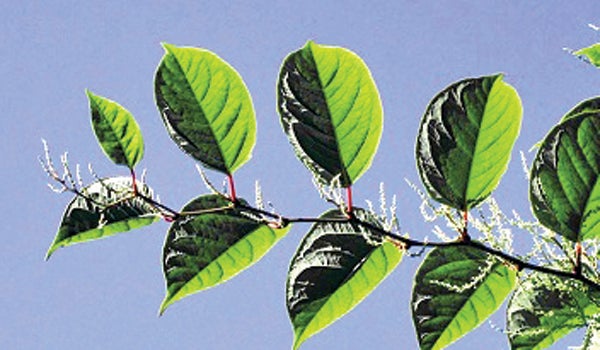Officials warning residents on growth of invasive plant
Published 10:12 am Friday, May 12, 2017
An area invasive species management group is asking for the public’s assistance in identifying the growth of Japanese knotweed in the region.
The Southwest X Southwest Corner Cooperative Invasive Species Management Area, or SW x SW Corner CISMA, is hoping to help homeowners and citizens monitor, map and learn how to treat knotweed. This plant can reproduce from a fingernail-sized piece of the stem or root, making it difficult to control once it establishes.
“Invasive species are always easiest to treat before they can really establish and get settled”, says Eleanor Serocki, the Coordinator for the CISMA, “We’re hoping that we can help find these patches sooner, so that homeowners can take action quickly.” If you have knotweed, or if you know of a patch, the CISMA is encouraging the public to report it either to the CISMA directly, or via the Midwest Invasive Species Information Network at misin.msu.edu. “The first step is to make sure that people know that it’s here, and that it’s a problem. After that, we can work together to manage the issue.”
Japanese knotweed is a fast growing, dangerous invasive plant that is becoming more common in southwestern Michigan.
Because of its deep, strong roots, which can reach 10-feet deep, knotweed can break foundations and hardtops, and can threaten infrastructure in homes and on public property. The stems of the plant can grow up to 20 feet tall, and grows dense enough to become impassable to both animals and humans.
Knotweed is often able to outcompete native species, partially because of how early and quickly it grows.
A knotweed near the St. Joe River grew more than 3 feet in just more than three weeks at the start of April. The plant will continue to grow throughout the summer, putting out large, heart shaped leaves on zig-zagging stems.
The plant is often called “Michigan bamboo” because of the bamboo-like reddish nodes up the tall, hallow stem of the plant. In late summer, Japanese knotweed puts out sprays of creamy white flowers.
People with knotweed on their property should make sure to avoid mowing or digging the plant, since it can cause it to spread further. Instead the state recommends a fall treatment of specific herbicides to combat the plant’s significant root system.
The CISMA has also purchased a tool, called a Japanese Knotweed Injector, that homeowners can borrow from their county’s conservation district office.
“We’re hoping we can provide the tools that people need to get the job done right”, Serocki said. “The injector allows homeowners with small patches to inject the herbicide directly into the stem of each plant, ensuring there is no off-target damage in sensitive areas, like slopes, lawns, or garden beds.”
The CISMA is hoping to increase outreach and education this summer by informing homeowners with knotweed of the impacts, officials said.
The SW X SW Corner CISMA is a Michigan Department of Natural Resources grant funded program to manage invasive species in Berrien, Cass and Van Buren counties. With funding from the Michigan Invasive Species Grant Program, the CISMA aims to help landowners and stakeholders in the Southwest Michigan area manage invasive species.
For questions on Invasive species contact CISMA at (269) 445-8641 ext. 5 or email photos and address or latitude/longitude to kimberly.barton@macd.org.







